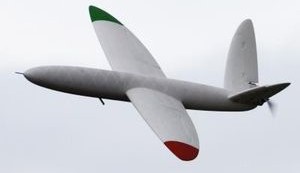World’s first aircraft from 3D printer
on

Engineers at the University of Southampton, UK, have designed and flown the world’s first ‘printed’ aircraft, which could revolutionize the economics of aircraft design.
The SULSA (Southampton University Laser Sintered Aircraft) plane is an unmanned air vehicle (UAV) whose entire structure has been printed, including wings, integral control surfaces and access hatches. It was printed on an EOS EOSINT P730 nylon laser sintering machine, which fabricates plastic or metal objects, building up the item layer by layer.
No fasteners were used and all equipment was attached using ‘snap fit’ techniques so that the entire aircraft can be put together without tools in minutes. The project team worked in partnership with 3T RPD who undertook the manufacture and detailing of the design, as well as supplying laser sintering knowledge and expertise.
The electric-powered aircraft, with a 2-metres (
Laser sintering allows the designer to create shapes and structures that would normally involve costly traditional manufacturing techniques. This technology allows a highly-tailored aircraft to be developed from concept to first flight in days. Using conventional materials and manufacturing techniques, such as composites, this would normally take months. Furthermore, because no tooling is required for manufacture, radical changes to the shape and scale of the aircraft can be made with no extra cost.
This project has been led by Professors Andy Keane and Jim Scanlan from the University’s Computational Engineering and Design Research group. SULSA is part of the EPSRC-funded DECODE project, which is employing the use of leading edge manufacturing techniques, such as laser sintering, to demonstrate their use in the design of UAVs.


Discussion (0 comments)